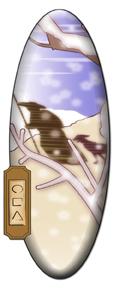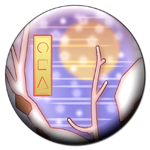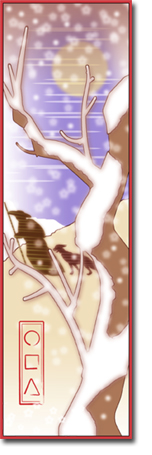On The Way: The Daily Zen Journal
The Mirror of Zen – Part 2
So Sahn (1520-1604)

The Zen meditation tradition descends from the three situations where the Buddha transmitted his insight wordlessly from mind to mind. The sutra tradition derives from the occasions of the Buddha’s spoken teachings, delivered throughout his life. Therefore, it can be said that Zen is the Buddha’s mind, while the sutras are the Buddha’s words.
The tradition regarding the Buddha’s words holds that he taught his disciples for forty-nine years. This tradition is sometimes viewed with regard to five kinds of teaching: the teachings that lead to good rebirth in human or celestial form; the Hinayana teaching; the Mahayana teaching; the teaching of Sudden Enlightenment; and the complete teaching on the Bodhisattva Way. The Buddha’s cousin and faithful attendant, Ananda, unleashed this ocean of sutra teachings.
Zen meditation employs the wordless to reveal what is beyond words, whereas sutras rely on words to express what is beyond words. So mind itself is the Zen teaching, and speech is the sutra teaching. Dharma has but one taste, yet the difference between realizing it and merely understanding it conceptually is as vast as that between heaven and earth.
If you become attached to words and speech, then even the Buddha’s silently raising a flower or Mahakashyapa’s wordless smile will be only another trace of the sutras. However, when you attain the truth within your own mind, even all the base chatter or elegant speech of the mundane world become nothing less than this same “special transmission outside the sutras.”

Dharma has no name, and so it cannot be grasped through words. It has no form, and so it cannot be understood through thinking. The instant you open your mouth to speak it, you have already departed from your original mind. When you lose this original mind, then even the story of Buddha silently lifting a flower overhead and Mahakashyapa wordlessly smiling is, in the end, no better than dead speech to you.
If you attain the truth within your own mind, then even the senseless chitchat in the streets and markets are like the Dharma speech of a great teacher, and even a chirping bird or the wail of an animal express truth. For this very reason, when Zen Master Pao-chi heard the crying of bitter mourning, he awakened to his own mind and danced joyfully!
This teaching expresses the depth and shallowness of the Zen meditation and scriptural traditions, respectively.
My hope is that all practitioners of the Way completely believe in their true self. You should neither lack confidence nor give rise to pride.

Mind is fundamentally equal and the same, and thus there is no real distinction between “ordinary people” and “sages.” Nevertheless, there are, in reality, those who wander in darkness and those who have been awakened to their true nature, thus distinguishing “ordinary people” from “sages.” Following the instruction of a teacher, a practitioner may attain, in an instant, his true self, thereby realizing that he is ultimately no different from the Buddha. Hence it is said, “Originally, there is nothing,” which means simply that one must not underestimate oneself, and lack confidence. This is the teaching of “sudden enlightenment.”
Even after attaining some realization, however, one must always strive to cut off lingering mind-habits so that one can be fully transformed from an “ordinary person” into a “sage.” This is the teaching of “gradual cultivation,” emphasizing that we must “polish the mirror from moment to moment.”
This is why pride can be such a hindrance. Lacking faith in one’s own nature is the sickness of those attached to scriptural authority, whereas pride is the disease of those who practice Zen meditation.

So Sahn (1520-1604)
Excerpted from The Mirror of Zen – The Classic Guide to Buddhist Practice by Zen Master So Sahn, Trans Boep Joeng





Dharma has but one taste, yet the difference between realizing it and merely understanding it conceptually is as vast as that between heaven and earth.
This is a topic we have discussed often, but it can’t be emphasized enough as it is easy to fall into the trap of confusing intellectual understanding with the complete turnaround of realization. With the concern for direct apprehension beyond words and letters, all too often a goal-oriented mindset can take over early in practice.
So, what to do? On the one hand, there is this carrot on a stick in the many stories of enlightenment. If not careful they can engage comparing-mind which says, “Well, you have not exactly had that kind of realization!” Hence the phrase in practice “Great effort, no goal” helps us to stay connected to practice itself, free of gaining mind.
At some point, this all simply drops away. Practice is just what we do, and there are many ways to practice and many traditions. The stories are entertaining and can be encouraging along the Way, but at some point, we just let it all go and have faith in the Way. And on our own what does the life of a sage look and feel like? Apart from what we have read or been told, how do we live a life of practice?
Questions are here to help us explore on our own and stay with the deeper aspects of our lives. Each of us has a life koan or two to help us stay connected, and everyone has the ability to actualize in daily life the principles of the Way.
Fine snow falling flake by flake,
Elana, Scribe for Daily Zen